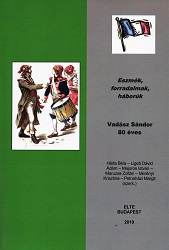
We kindly inform you that, as long as the subject affiliation of our 300.000+ articles is in progress, you might get unsufficient or no results on your third level or second level search. In this case, please broaden your search criteria.


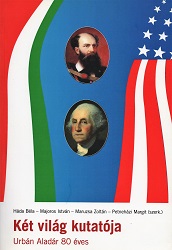








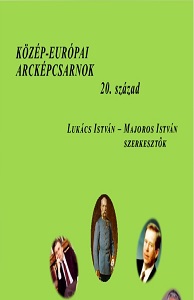
Dr. Milan Hodža (1878–1944) was the first prime minister of Czechoslovakia with Slovak origin (1935–1938), but he was active in the public life from the end of 19th century. Before the first world war he was the member of Hungarian parliament and the unofficial advisor of the Franz Ferdinand (Belveder Circle). Hodža this time established the Slovak agrarian democratic political movement and after 1919 he was the deputy president of the Czechoslovak Agrarian Party, which was the most important civic party in the interwar period. Hodža always supported the idea of the cooperation of the Central European countries. Especially important was this idea for him during his emigration under second world war. Hodža did not agree with the pro-Soviet orientation of emigrant president Edvard Beneš and they had many conflicts. Beneš was the winner of this struggle and Hodža emigrated to USA. There he wrote the main publication of his life – the concept of the fedaration in the Central Europe.
More...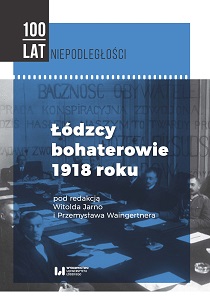
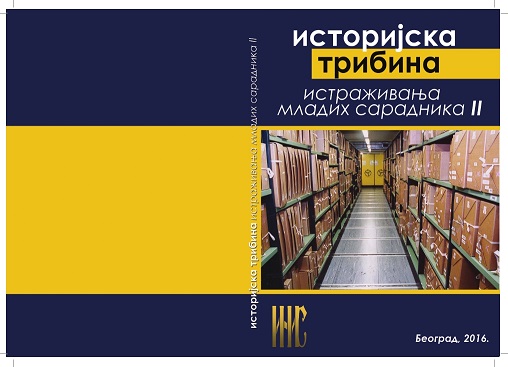
Functioning of the Institute for Compulsory Education in Smederevska Palanka has been a source of controversies in Yugoslav and Serbian historiographies for decades. Most frequently, it was analyzed through the ideological prism. For some it was a concentration camp and a torture chamber, for others a „peace oasis“ and a „college for communists“. Not only ideological, but also utilitarian motives of witnesses and authors who have been writing about the Institute, contributed to tendentious interpretations. This institution, probably best described as „reformatory“ by the British Foreign Office, was integral part of the concept of education in „national spirit“ that was implemented by the collaborationist Ministry of Education. The leader of the Zbor movement, Dimitrije Ljotić, significantly contributed to its founding. During the two years of the Institute's operation, some 1,200 young communists passed through it. Their stay in the Institute was marked by hard material and life conditions, but they enjoyed regular general and professional instruction, and could take part in a number of free-time activities of entertaining, artistic and sporting character. The idea of stay of young communists in the Institute was not psycho-physical torture, but rather their ideological „conversion“ in harmony with national-conservative ideas the Nedić regime cherished of the „de-nationalized“ and „misled“ youth and intelligentsia. Apart from the regular political instruction, special lectures were held by members of the Zbor, by collaborationist dignitaries, but also by a number of a-political experts from various fields. After the failed rebellion at the Institute in mid-April 1943 security and disciplinary measures were tightened and the culprits were turned over to the Special Police and shot after investigation at the shooting-range in Jajinci. During the two years of the Institute's functioning a large number of inmates was set free as „successfully re-educated“, and several dozens of cases of former inmates asking the Ministry of Education to be readmitted to the Institute were recorded. The institution's functioning was ended amid the action for liberation of Serbia. The Institute was officially disbanded in September 1944 and its Head Master joined the chetniks of Draža Mihailović with whom he found his death. Among the more prominent inmates were the famous movie director Mladomir Puriša Đorđević, writers and journalists Milutin Doroslovac (Milo Dor), Slobodan Marković (Libero Markoni) and Branko V. Radičević, as well as the judge of the Supreme Court of the Socialist Federal Republic of Yugoslavia Tiosav Velimirović.
More...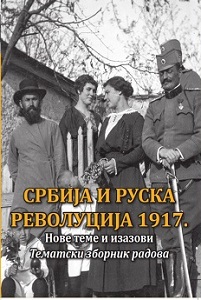
This paper deals with the part of the ideological world of Russian emigrants, primarily priests and theologians, who wrote on the pages of the Serbian church press of the 1920s about the reasons and causes of the coup in Russia in 1917. The approach from the standpoint of providentialism, which was traditional for Christian church in explaining the historical processes, dominated; at the same time, apocalyptic–symbolic–esoteric tones prevailed as they were intensified by the real difficulties of refugee life. When Russian emigrants tried to study the mystery of success of the October revolution, they used the Serbian church periodical press to show their anti-Semitic moods, criticism of communism from the Christian position and fear of the Bolshevism.
More...
The article deals with the activities of the members of the Croatian Party of Rights in Russia from mid-19th century till the 1917 October Revolution. Conflict between the Serbian and Croatian program for formation of nation states was related to the aspirations of the Russian and Austrian empire to take part in the division of the Ottoman heritage in the Balkans. In such context, representatives of the Party of Rights sought to create a political base in Russia for the realization of the main goal of their program: the creation of the Croatian state in the maximum extent – within or outside the Habsburg monarchy. There was a consensus on the basic elements of Croatian national interests between the National Party of J. J. Strossmayer and the Party of Rights of A. Starčević, who cooperated. After E. Kvaternik’s failure to find support in Russia for the program of the Party of Rights, Krunoslav Heruc, very capable advocate and organizer and also a member of the Party of Rights, went to St. Petersburg. In the period from 1885 to 1917, he used the Slavophil ideology to form a number of interconnected associations which influenced various Russian institutions. He wrote for a number of newspapers and magazines in Croatia and Russia, and published a number of publications promoting the ideology of A. Starčević. During the World War I, he joined a group of associates of different nationalities with whom he fought against the policy of the Serbian government and interfered with the formation of volunteer corps in Russia. The success of his actions was partly due to distress in Serbian institutions and demoralization of the Serbian elite after the military defeat and occupation of Serbia in 1915, as well as the lack of understanding of official Russian circles of international relations in the Balkans. Struggle between the Serbian and Croatian politics in Russia was ended with the revolutions in 1917 that have paralyzed the Russian institutions, and then launched a civil war. In such circumstances, the orientation of the Yugoslav program was the only way out for the two opposing sides.
More...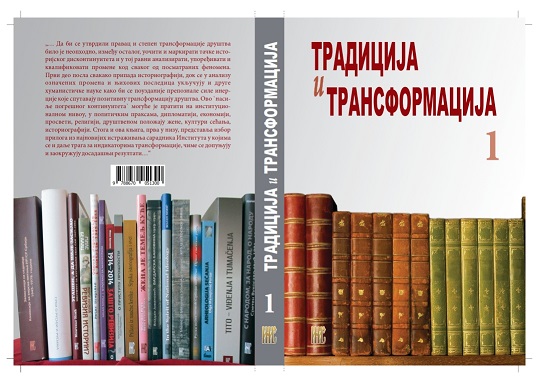
У чланку се анализирају шири и ужи историјски токови и догађања који су били основа за мапирање пејзажа сећања и изградњу историјске културе Топличког краја и који су учествовали у обликовању јединствене традиције ослободилачких ратова. Представљени су споменици јунацима из ослободилачких ратова 1912–1918, борцима из Народноослободилачког рата и револуције 1941–1945. и споменик Зорану Ђинђићу, као одређени изрази идејних и политичких система, онако како данас постоје и шта данас представљају. Дат је и аналитички приказ унутрашњег садржаја и спољашњег положаја изложбе о Народноослободилачком рату 1941–1945, која се налази у Народном музеју Топлице у Прокупљу.
More...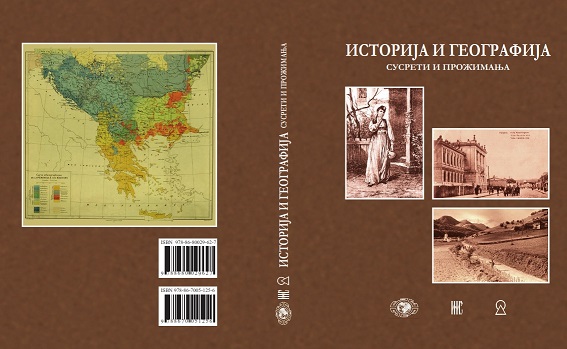
This paper, through the process of renaming urban toponymy, analyzes the impact of the ruling ideology in shaping the urban space in Serbia in the first years after the World War II. The renaming of old, bourgeois urban toponymy and the construction of new, communist one was carried out systematically and gradually, just as the new Yugoslav state and society was being built. The revolutionary government was aware of the symbolic radiation offered by urban area. Therefore, it was trying by renaming to adapt it to the symbols of the new Yugoslav state and provide another way for spatial and collective expression of the identity of the society. When renaming towns and streets, two main types of intervention were carried out. The first is related to the maintenance or restoring old names, and the other on the renaming of existing towns and streets. The government comprehended this kind of intervention in the urban space very seriously. This means that it legally regulated it and provided to a number of factors (the city government, the Ministry of Interior and the Ministry of Education, as well as the Communist Party) to participate and monitor the process of renaming. The government did not conduct extensive intervention in the renaming of cities and did not have that intention, because the old names, some of the ancient and medieval period or somewhat later time, were not in contradiction with the newly established value standards. It completely changed the names of only those cities that, in its opinion, had the dubious symbolic value, such as those containing monarchist words (Kraljevo or Caribrod) or they were ideologically problematic (Petrograd) and wanted to highlight the importance of some individuals of the Socialist Movement (S. Markovic and J. B. Tito). The renaming of streets was much more radical and expansive. It was carried out systematically and gradually. First they changed the names of streets in the city centres, then in the wider center, and then those on the periphery. New name of the street depended on its importance. The most important figures, events and concepts of the new Yugoslav state were given the most important streets. Instead of the various layers of civil street toponymy, the new layers of Communist street toponymy were created. These new layers symbolized the Yugoslav and international socialist and communist movement, the National Liberation War and revolution, Slavic rapprochement and the like. The names of streets that did not collide with just the aforementioned ideological values were not changed. The renaming of the streets up to 1948 had a striking ideological and political content and intention to break with inherited civil toponymy. After 1948, in particular after 1950, the need prevailed to regulate the parts in an urban area and to enable faster and easier their communication networking. Moreover, these are the streets that were on the outskirts of the city, and often did not have official names. With the renaming, an entirely new meaning to the urban area was establishing, and with a new meaning new symbols of representation of society and its values.
More...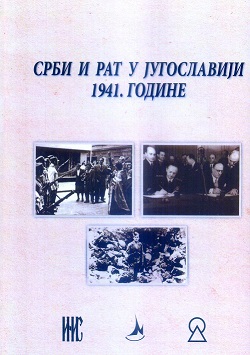
Догађаји у Србији 1941–45. године – окупација, грађански рат и „револуција”, ослобођење и установљење нове комунистичке власти – у значајној мери су били одређени садејством многих спољних фактора. Унутрашње претпоставке за смену ауторитарног монархистичког режима тоталитарним комунистичким биле су у постепеном слабљењу положаја владајуће елите. У условима кризе шестојануарске диктатуре једини фактор стабилности постао је ауторитет краљаслободиоца-ујединитеља. До октобра 1934. он је успевао да угуши центрифугалне тенденције и гарантује целовитост државе. Даљи ток догађаја потврдио је оштроумност опажања савременика: „Ако је икада и постојао пример да нераскидивост ланца зависи од једног јединог звука, то је онда случај Југославије и њеног краља”. Крајем 30-их и почетком 40-их слабост регентства – које је зависило од присталица „племенског” партикуларизма, који је био лишен подршке оних који су били за јачање централне власти – унапред је одредила незаштићеност српских интереса. Као резултат тога, у ситуацији приближавања рата, делегитимација традиционалне политичке класе пружила је у Србији, као и у Русији 1917, добру подлогу за уздизање некада малобројних и маргиналних партија чије су пароле биле „општа једнакост”, „правда и прерасподела”, „интернационална солидардност”, „борба са антинародним режимом” и др.
More...
The newly-proclaimed Croatian state in April 1941 was based on the ideology of the Ustasha movement that was founded on racist and extremely nationalist policy with the aim of creating a “purely Croatian living-space” that would make possible the existence of the “pure Croatian nation”. The precondition for such tendencies was physical extermination of the Serbs and the Jews who were declared the “greatest enemies of the Croatian people” for whom “there was no place in Croatia”. They were joined by the Gypsies, as a non-Aryan inferior race. In order to achieve these goals “internal purification” was also needed, i.e. it was also necessary to destroy all those Croat and Muslim elements designated as traitors due to their “un-Croatian behavior” who were perceived as “a blemish on the body of the pure Croatian nation”. The reaction to the entry of German troops into Zagreb and the enthusiastic greeting with which they met, show that at the time of the aggression of the Fascist powers on Yugoslavia the ideology of the Ustasha movement was in keeping with prevailing ideological and religious attitude of large part of the Croatian people. The goals, the way of organizing and performing the activities of the Ustasha organization prove its terrorist character. Crimes against the Serbian population (as the factor of disturbance) and against the Jews and the Gypsies (as non-Aryans) were committed not because these weren’t loyal to the new government and because of the stability of the new state, but because of the ideological bases on which that state was build. This was shown by public statements and the propaganda activities of the exponents of this ideology (the Ustasha) and by the government through legislation, as well as by actions of all state organs – the police, the military, the judiciary, the administration – primarily through physical destruction of groups or through creation of conditions condemning a group to biological destruction. This is particularly visible from the analysis of the chronology of crimes committed during the first days of the existence of the ISC, that is in a period when there was no organized resistance as well as by the analysis of statistical data of the name-census of the war victims that has been revised so far. From the analysis of the statistical data and categories of the name census of the victims it is evident that the Independent State of Croatia ever since its proclamation and throughout the war committed systematic crime of genocide with the intention of destroying some ethnic, national and religious groups – Orthodox Serbs, the Jews and the Gypsies – which is particularly visible in the analysis of the 1941 data. Genocidal character of the crimes during the first days of the ISC’s existence can be observed on examples of mass liquidations in which political or military capability of a group to oppose the regime played no role whatsoever. On the contrary, mass liquidations of the whole population took place – of men, women, children and the aged. Exactly the analysis of the manifest intent and actions in 1941 show that the crime , the most severe form of crimes against humanity – the genocide (as defined afterwards) was in-built in the very foundations of the newly-founded state and its ideological basis.
More...